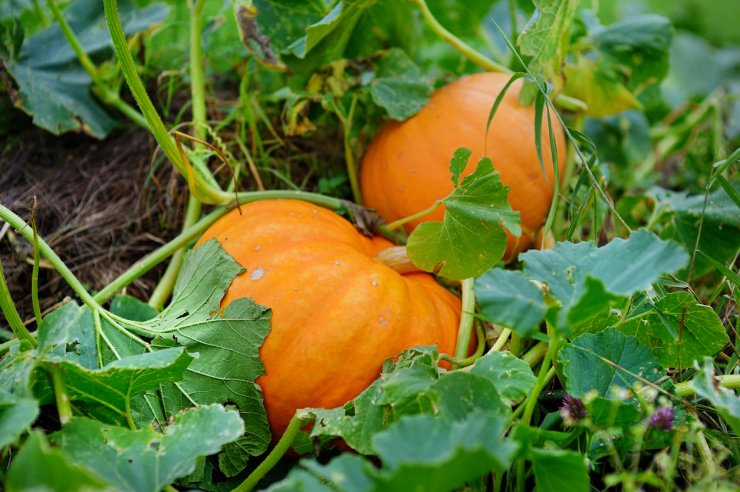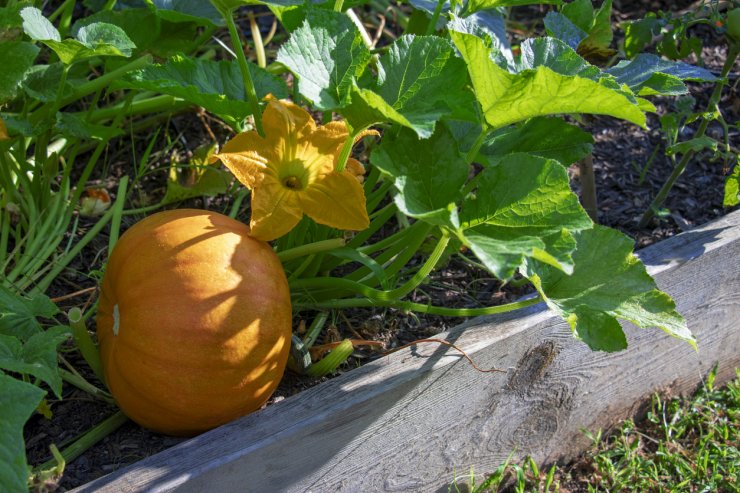
Pumpkins on vine in the garden
Before you pick up your first seed packet, make sure your garden area is set up to welcome pumpkins. The first thing you’ll need to do is test your soil; this is a step that’s easy to skip, but you shouldn’t—it’s the one thing you really need to do before planting.
Pumpkins like soil that’s well-drained, fertile, and loamy. They prefer soil with a neutral pH—that’s why you want to have your soil tested. It’s an easy process, and it’s well worth the first step toward having a great pumpkin patch.
You can test your soil the fall before you plant and amend it as needed, so it’s ready to welcome your pumpkin seeds the next spring or summer. Or you can make any necessary adjustments as you’re planting your seeds.
Pumpkin seeds don’t germinate in cold soil, and the seedlings don’t handle frost well. Don’t plant your seeds until all danger of frost has passed and the soil is warm. Check the growing time for your zone. If you plant your pumpkins too early, they may ripen and rot before Halloween rolls around. And some little child won’t be too happy about that!
Pumpkins need lots of organic matter—if you don’t have a compost bin yet, maybe it’s time! Slow and deep watering and a balanced fertilizer are also needed. As you prepare each spot to plant your pumpkin seeds, you’ll want to make sure you have the right nutrients on hand. A wheelbarrow is a good investment if you don’t have one yet; it makes it much easier to mix the nutrients and transport them to where the pumpkins need them.
A word about watering. Pumpkins need a lot of water on top of needing nutrients. If you don’t have a drip irrigation system, plan to be out there with your watering can or your hose (held low! Don’t get the leaves wet!).
Pumpkin Planning: Pick a Place

Pumpkin in a raised bed
Pumpkins need a lot of room to grow and roam. Yes, you can grow pumpkins in containers or raised beds—but be prepared to wrangle the vines if you plant a variety that really spreads out. If you’re incorporating them into your garden, plan to plant them at the edges, or at the corners, and then train the vines away from the rest of your crops. It’s always a good idea to check the space requirements of any variety you’re considering.
Make sure the spot you’ve picked out for your pumpkins has the three key ingredients: sun, well-drained soil, and access to water. Lots of water.
Decisions, decisions, decisions

Carving a pumpkin for Halloween
Why are you growing pumpkins? Do you want pumpkin pie? Pumpkin bread? Hearty autumn soup? Or maybe you just want some jack-o’-lanterns for display (because they’re really stringy and not that good to eat—except for the seeds). Or perhaps you’re feeling ambitious, and you want to grow a giant pumpkin—just for fun, or maybe for competition.
Please tell us how you plan to use your pumpkin harvest.


 Previous
Previous

